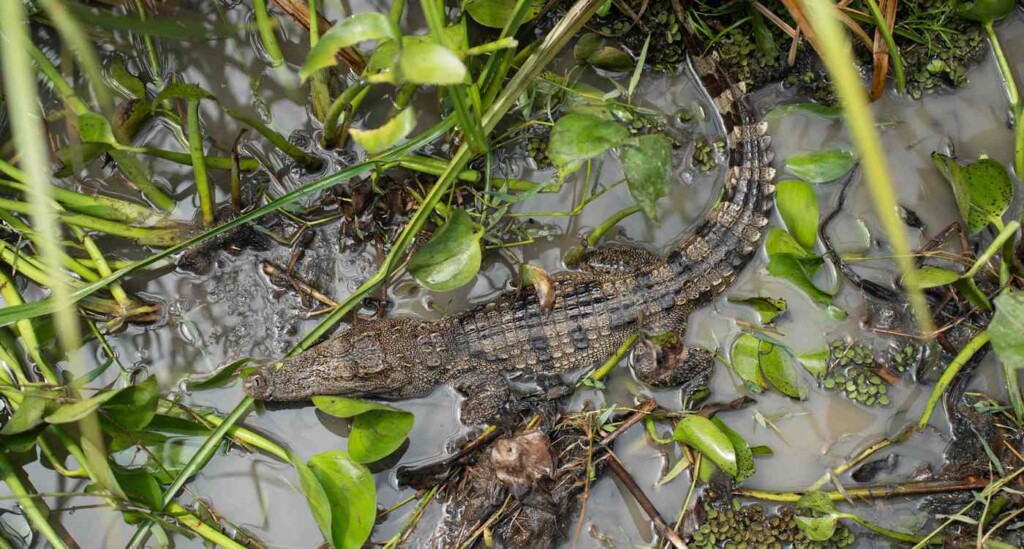
One of the Siamese crocodiles released – credit Phetpakay Bounhaxay © WCSWhile less than 1,000 Siamese crocodiles remain in the wild, community members in Laos have released ten of the rare animals into a local wetlands to boost the population.While crocodiles are not hunted, the species (Crocodylus siamensis) is ranked as Critically-Endangered by the International Union for Conservation of Nature because of the threats of entanglement in fishing nets, the clearance of wetlands, and seasonal draining of habitat to expand dry-season rice cultivation.Unlike many of its other aggressive cousins, the Siamese crocodile is not a threat to humans. Communities that reside close to the species’ habitat hold the crocodiles in high regard spiritually—believing they bring good luck.The Xe Champhone Wetland where they were released is located in the Savannakhet province which represents the larger of two ‘Ramsar sites’ (Wetland of International Importance).It’s home to an abundance of aquatic biodiversity such as endangered turtle species and waterfowl.A dedicated conservation program for the Siamese crocodile is in place in the four target districts where they’re found. Volunteers work with government officials and eggs are collected to be transported to the village administration office for incubation at ambient temperature for about two months.Once...

